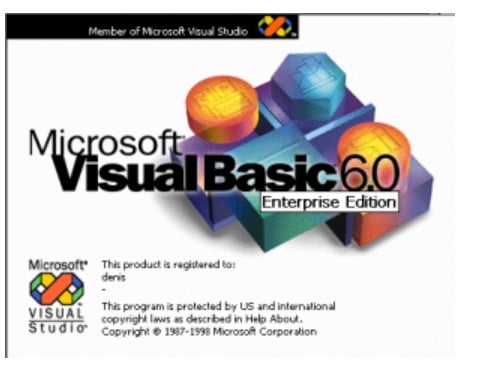The world of programming increasingly needs more professionals through whom innovative developments can be created that improve and simplify all types of tasks. That is why we have spoken with our colleagues at Veleno about Visual Basic and its descendant VB.net, so we are going to update all those who want to learn how to program applications, and remember that you will also be able to find more information on its official website.
What is Visual Basic
First of all, we are going to talk about Visual Basic, a programming language that was developed by Microsoft and that came onto the market for the first time in 1991.

It began with its Visual Basic 1.0 version, created by Alan Cooper's team, and was released specifically on May 20 at the same time that Windows 3.0 was released.
In its day it was created as a very interesting alternative for the creation of graphical user interface software, and stood out for the fact that it offered greater simplicity of use, thus facilitating the creation of more powerful and advanced applications in a shorter period of time. .
As the years went by, new versions were released until Visual Basic 6.0 which was released in 1998, giving rise to the most popular version used by programmers for many years.
Why Visual Basic is no longer updated
It was in 1998 when Visual Basic was presented with its latest version 6.0, which would have many years of operation ahead of it, but the truth is that Microsoft stopped updating this programming language for different reasons, among which stands out the new trend towards .NET.
.NET was an improved programming model that had greater adaptation to different types of platforms, but this was not the only reason why Microsoft decided to put this project aside, since other factors such as the technological evolution that was presented Through new technologies and new development models, the growing demands in stability and security, as well as the need to look for more compatible alternatives did the rest, giving rise to many other options, of which we still have some very interesting ones.
VB.NET, the replacement for Visual Basic
VB.NET is the name of what is known as a substitute for Visual Basic, and in fact, its extended name is Visual Basic .NET, also developed by Microsoft and whose purpose is to cover all the shortcomings that the original Visual Basic had.
Basically it is an evolution of the Visual Basic language, but this time with multiple advantages such as greater simplicity, simpler operation, allows you to operate with other Microsoft technologies, offers greater security, facilitates the development of applications, allows you to manage memory, has a very large class library, has support for object-oriented programming and for web and desktop development, and offers greater simplicity in debugging and maintenance.
To this we must add that, currently, VB.NET has a large community and a wide range of resources that include everything from tutorials to documentation, forums and courses, making it much easier to learn how to use it and solve all kinds of problems. doubts.
Among the most important aspects of VB.NET and the reason why it is so appreciated, we can highlight the fact that it is an integrated development environment with very complete tools and more intuitive operation.
It allows you to develop web and desktop applications, guaranteeing maximum flexibility, without forgetting that it has a much clearer syntax, which means that it is easier to write and read, thus solving some of the classic problems that we encounter when correcting errors in the code.
In short, VB.NET is the solution that replaces the classic Visual Basic, offering a complete update and a wide range of possibilities to create all types of developments, guaranteeing maximum optimization and security.

Expert in SEO/SEM and communication on social networks.
CEO at tecnologia.net and passionate about everything related to technological progress






